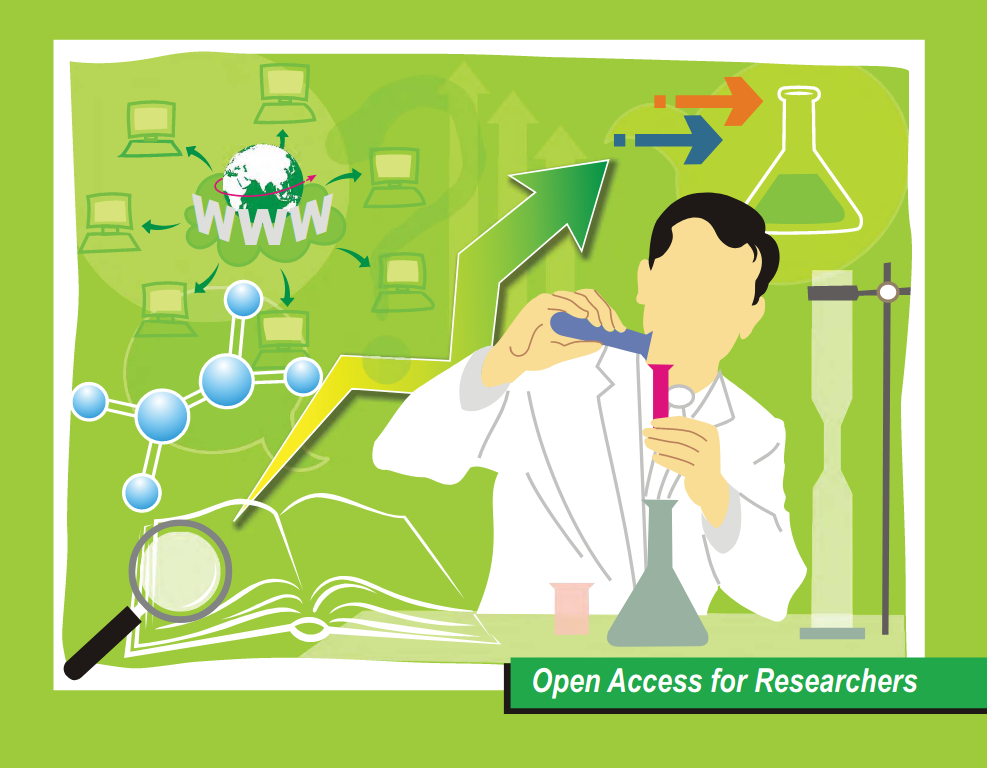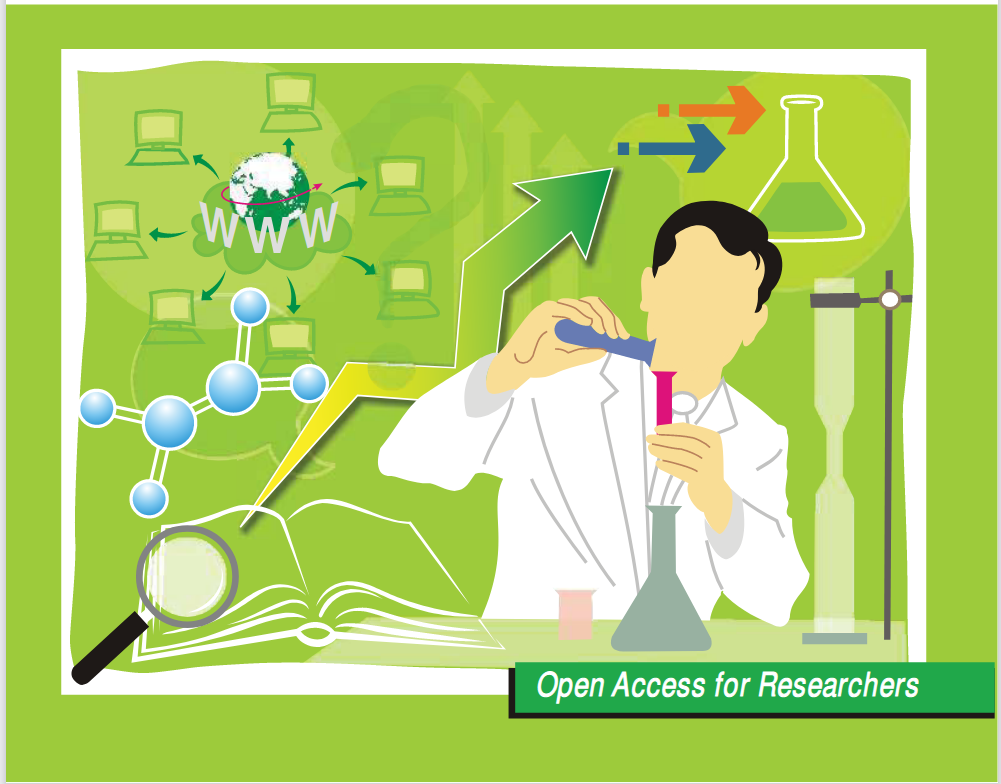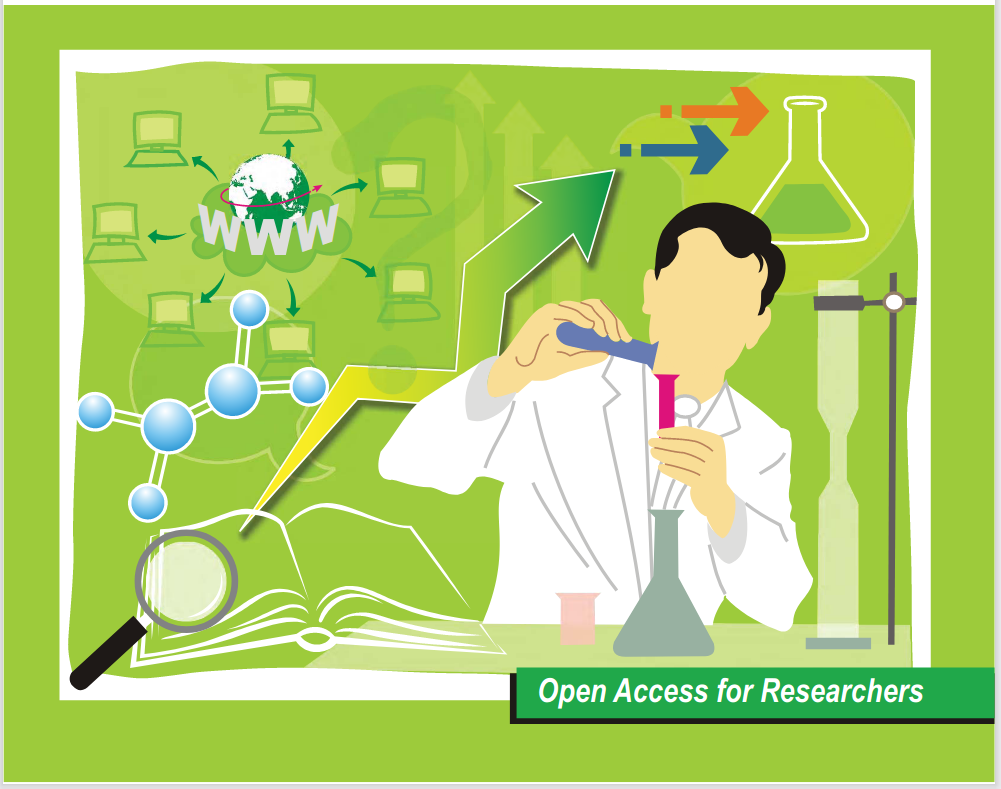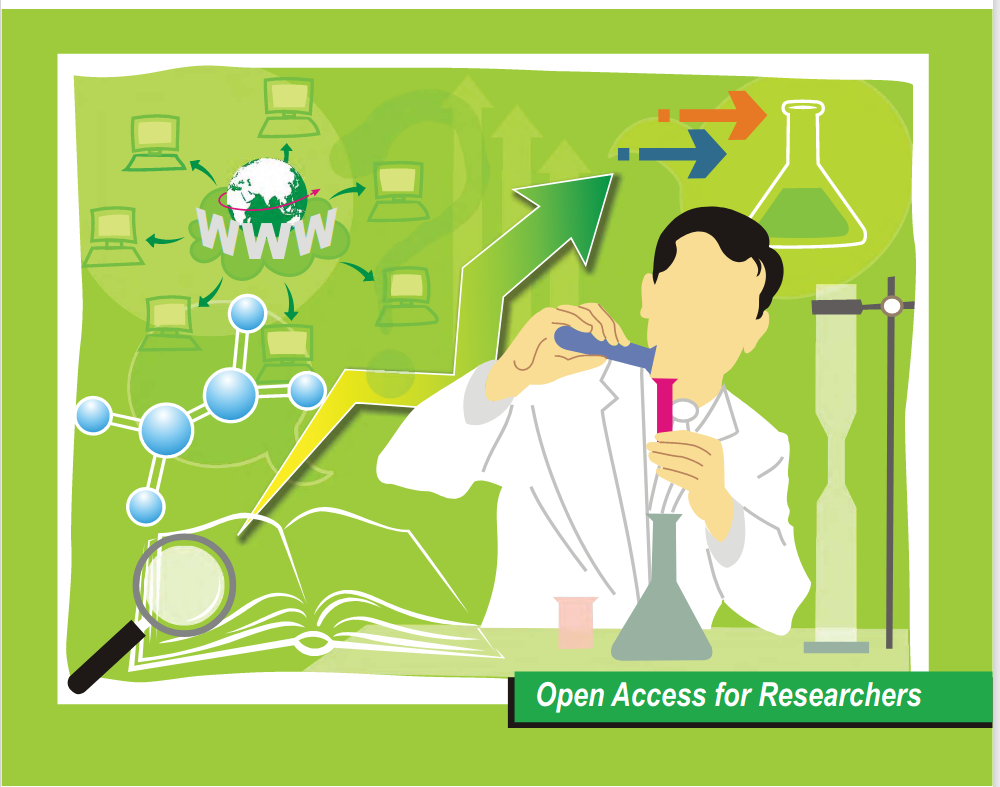Researchers, scholars and scientists main business is scholarly communication. We communicate about our work to others, as we push the boundaries of what we know and the society knows. We question established notions and truths about science. We share our findings with others, and in a way that is popularly known as scholarly communication which emerged with the publication of first journal in 1665. However, the term gained popularity only in the 1970s, as access to peer reviewed and scholarly communication became difficult. This module has four units covering introduction to scholarly communication, peer reviewed journals, electronica journals and databases and the Serials Crisis. At the end of this module, the learner is expected to be able to:
- Explain philosophy, mission, and objectives of scholarly communication
- Describe the process of scholarly communication
- Identify different channels of scholarly communication
- Discuss the dysfunctioning of the scholarly communication

Information and Communication Technologies (ICTs) in the late twentieth century had become enablers in empowering citizens worldwide in all segments. Openness in obtaining, processing, publishing and disseminating research information becomes easily achievable due to spread of ICTs and ICT-enabled services. Democratization of information and knowledge gets much impetus while bridging knowledge and digital divides necessitated with positive interventions by the inter-governmental fora. In the beginning of the 21st century, we see global leadership reached a consensus in harnessing global initiatives for facilitating social empowerment, economic progress, inclusive development and green economy. Global intergovernmental programmes introduced in the begging of the 21st century include United Nations Millennium Development Goals (UN-MDGs), World Summit on the Information Society (WSIS), and Internet Governance Forum (IGF) – which all have necessary action plans for bridging knowledge and digital divides. Open source software, open access research literature, open standards, open innovation and open research data have become dearer to researchers in developing countries as these promise openness and unrestricted access to information in ones’domains. Openness is considered in today’s world as a social construct, much required in the process of citizen empowerment. The notion of openness brings change in the society, provides sustainable solutions for bridging knowledge and digital divides in the society, more particularly in the forms of coherent North-South and South-South cooperation models. The openness also leads to development through the change enablers and local innovators, who will bring on board frugal, flexible and inclusive innovations for the benefits of the society. Open source software (OSS) development is an example of successful open innovation system, which led to development of a wide array of software applications as required in every sector of life, including in laboratories, educational institutions, R&D centres, and small scale enterprises. A majority of OSS developers belong to individual enthusiasts, who are undertaking a frugal innovation route for providing practical solutions to local problems, which they encounter day-to-day basis. Similarly, open access to scholarly literature primarily aims at bridging the knowledge divides as existed in the society and also to make public-funded research results freely accessible and available in public domain through online systems. There are global movements for achieving openness in diverse areas of ones’ activities, including software, research literature, technical standards, innovation and research data sharing. Beginning of the 21st century was the right time to restart the whole process of research communications with freedom from the dependency of proprietary products and services. Richard Stallman of Free Software Foundation initiated a pervasive open source software movement in the 1990s for collaborative development of software applications. The same open innovation model is being replicated in bringing public-funded research results in public domain through the modes of open access to scholarly literature. Open access movement gets much support from the stakeholders when the countries experience the great resource constrains or shrinkage in journals subscription or R&D budgets. The economic recession during 2008-09 in the western countries led to shrinkage of scholarly journal subscriptions both in universities and research institutions. Similarly, the developing countries face worst effects of affordability while subscription prices got skyrocketed. Openness also brings a cycle of creativity, engaging local talents in providing global solutions as well as global talents in harnessing local solutions. Interconnectedness in common internet-based platforms makes the knowledge flow more penetrative, consumable and oriented towards high degree of qualitative knowledge production. Knowledge workers in the 21st century are also increasingly collaborating with their counterparts located in other parts of the world. All these aspects relate to social metabolisms and social constructs for the greater benefits of the knowledge societies. Open access movement, thus, is mostly interlinked to broader perspectives of openness, where other social movements also share similar kind of experiences and social metabolisms. It is not an isolated movement, although, retains unique characteristics for serving the purpose of greater outreach of peer-reviewed research literature. This Module, titled “Concepts of Openness and Open Access”, has elaborately discussed different perspectives of openness, particularly which deal with open access movement. There are different modes of open access, namely, gold, green and hybrid, for making peer-reviewed research literature freely available to worldwide audiences. In addition making them freely accessible, certain OA literatures offer various degrees of rights exemptions, such as freedom to share, copy, distribute, modify, remix and reuse. This type of literature is known as Libre Open Access.

Intellectual Property Rights (IPR) are set of rights associated with creations of the human mind. An output of the human mind may be attributed with intellectual property rights. These are like any other property, and the law allows the owner to use the same to economically profit from the intellectual work. Broadly IPR covers laws related to copyrights, patents and trademarks. While laws for these are different in different countries, they follow the international legal instruments. The establishment of the Wold Intellectual Property Organization (WIPO) has established the significance of IPR for the economic growth of nations in the knowledge economy. This module has three units, and while the Unit 1 covers the basics of IPR, Unit 2 expands in detail the components of copyright and explains the origins and conventions associated with it. Unit 3 discusses the emergence of liberal licensing of copyrighted work to share human creation in the commons. In the last unit, we discuss the Creative Commons approach to licensing of creative works within the structures of the copyright regime that permits the authors to exercise their rights to share in the way they intend to. Creative Commons provides six different types of licenses, of which the Creative Commons Attribution license is the most widely used in research journals part of the Open Access framework.
At the end of this module, you are expected to be able to:
- Understand intellectual property rights and related issues
- Explain copyright, authors’ rights, licensing and retention of rights; and
- Use the Creative Commons licensing system.

This is the last Module of the course on Open Access for researchers. So far you have studied about Open Access, its history, advantages, initiatives, copyrights and licensing, evaluation matrix for research – all in the context of scholarly communication. In this Module with just two units, we would like to help you share your work in Open Access though repositories and journals. At the end of this module, you are expected to be able to:
- Understand the publication process involved in dissemination of scholarly works;
- Choose appropriate Open Access journals and repositories for sharing research results;
- Use social media to promote personal research work and build reputation.
In Unit 1, we discuss the research publication process at five stages – planning stage, preparing stage, pre-publication stage, publication stage and post-publication stage. We emphasize the importance of social media in sharing and making your work visible to the target groups.
In Unit 2, we focus on sharing your research through OA repositories and Journals. First we discussed the different types of repositories to select and highlighted the steps that you may consider including deposit in your own institutional repositories or in global open repositories. We then discuss the sources of finding and deciding on OA journals. This unit also provides guidance on choosing the right OA journals, as the quality of OA journals is often questioned.

- Teacher: Sneha Bharti

